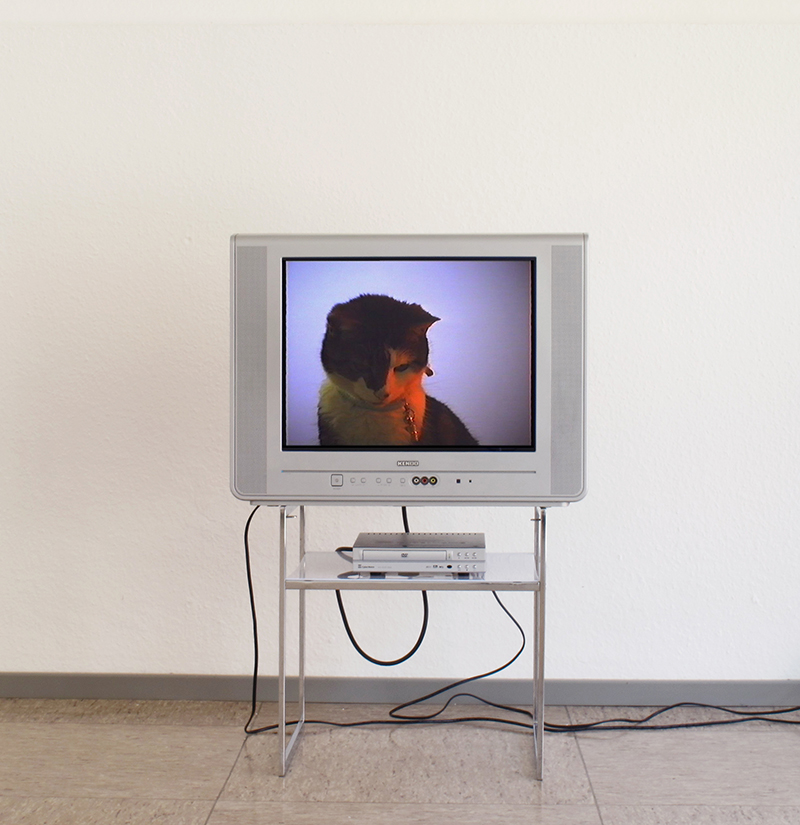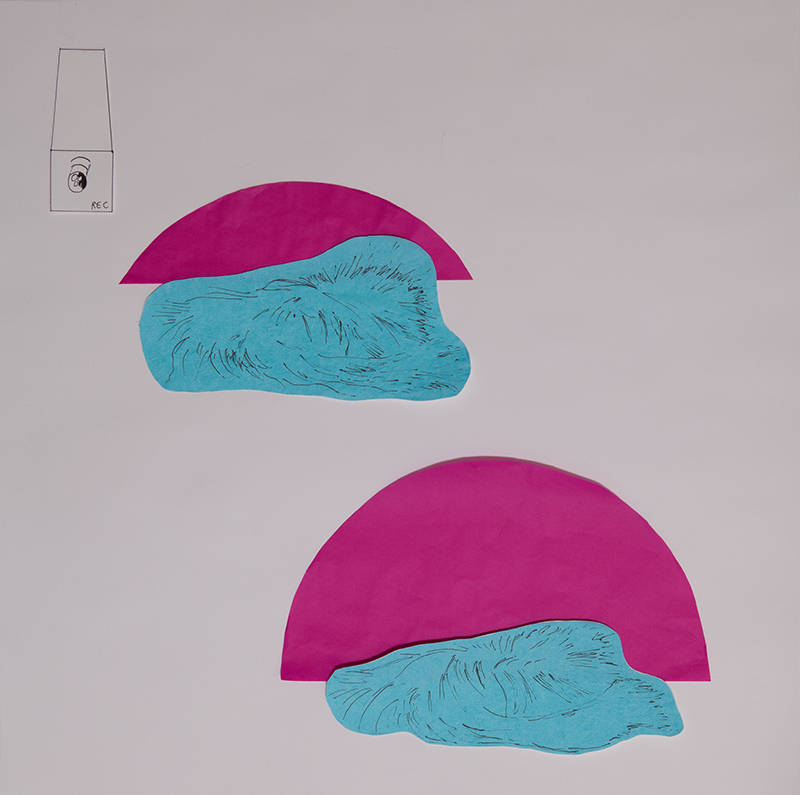Cat Sees Papa
Exhibition: 21.06.2014 – 09.08.2014
Opening: 20.06.2014, 19:00
| .
. . . . Cat Sees Papa . . . . . . . Cat Drinking Milk . . . . . . . . .Full Sun . . . . . . . Videographer . . . . . Sunrise |
|
Press Release:
Whatever happened to our dream of freedom? For the creature behind the camera, this archeology of knowledge does not exist. For the idealisation that Joseph Walsh has dreamt up for his medium, was not so much as the contrast between the toiling spectacle, the man preparing pistachios, and how he is viewed by the onlooker, the cat – but how the medium of the lens, as directed by the temerity of the cat’s interpretive values awaken the shifty observations of the camera itself.
The film could be said to topple over expectations of the viewer that seeks sociological popularist notions of filmic ideals, sometimes based solely on desire, sometimes based only on formal tricks. It could also be seen as a heightening of textures and forms, the reflections of light between cat and man – a dancing interlude between a notional imagination and how this splitting could possibly occur. However, in effect, it isn’t.
What in actual fact takes place is a dream. A mystery between lovers.
Imagine a camera held by an unrequited lover. Would it pertain to anything different to what is shown here? In this way, does nature really have its advantage over human as social animal? Here nature extends into the re-use of old technology, as Walsh wrote in his notes for the production: „Filming eventness of light with a Panasonic M7 VHS Camcorder. Minimise post production effects. Filming duration of an impersonal occurrence. Empathy and emotion thought differently. The Panasonic M7 as prophecy for a soft sensual gaze“.
One should only view Joseph Walsh’s exhibition as aesthetic amongst a tirade of political forces that try to penetrate its surface from the outside. His work is protected and accented. In fact, Walsh didn’t care about anything other than what is sensorial in a corporeal world and how his formal choices could entertain a lightened version of facts. It is for this reason that the film functions as a cosmic meditation on our present condition.
Pressetext:
Was geschah nur mit unserem Traum von Freiheit? Für das Lebewesen hinter der Kamera existiert diese Archäologie des Wissens nicht. In der Idealisierung, die sich Joseph Walsh für sein Medium erträumt hat, geht es weniger um den Kontrast zwischen dem strapaziösen Spektakel eines Mannes, der Pistazien schält, und wie er von dem Zuschauer, der Katze, wahrgenommen wird, sondern vielmehr darum, wie das Medium der Kameralinse, von dem Hochmut und den interpretativen Prioritäten der Katze dirigiert, in den schwankenden Beobachtungen der Kamera selbst erlebt wird.
Man könnte sagen, dass der Film die Erwartungen jenes Zuschauers umstößt, der soziologischen, popularistischen Ideen von filmischen Idealen nachhängt, seien es die, die lediglich auf Sehnsüchten basieren oder die, die ausschließlich an formalen Tricks interessiert sind. Man könnte ihn auch als eine Übersteigerung von Texturen und Formen sehen, die Reflektionen des Lichts zwischen Katze und Mensch – ein tänzelndes Zwischenspiel zwischen einer fiktiven Vorstellung und davon wie diese Trennung von Vorstellung und Realität möglicherweise in Erscheinung treten könnte. Tatsächlich jedoch ist es das nicht.
Was in Wahrheit hier stattfindet, ist ein Traum – ein Geheimnis zwischen zwei Liebhabern.
Stell dir eine Kamera vor, die von einem abgewiesenen Liebhaber gehalten wird. Würde sie irgendetwas anderes einfangen, als das was hier zu sehen ist? Hat die Natur sozusagen wirklich einen Vorteil über den Menschen als soziales Tier? Hier erstreckt sich die Natur bis in die Wiederverwertung alter Technik, wie Walsh in seinen Notizen zur Produktion schreibt: „Das Eventhafte des Lichts mit einem Panasonic M7 VHS Camcorder filmen. Die Effekte in der Post- Produktion auf ein Minimum reduzieren. Die Dauer einer unpersönlichen Begegnung filmen. Empathie und Emotion als etwas anderes verstehen. Die Panasonic M7 als Prophezeiung für einen weichen sinnlichen Blick.“
Man sollte Joseph Walshs Ausstellung nur als ästhetisch ansehen inmitten einer Tirade von politischen Kräften, die versuchen von außen ihre Oberfläche zu durchdringen. Sein Werk ist geschützt und akzentuiert. In Wirklichkeit hat Walsh sich um nichts anderes gekümmert, als das was sinnlich in einer körperlichen Welt ist und wie seine formalen Entscheidungen eine leichtere Version von Fakten erschaffen könnten. Aus diesem Grund funktioniert der Film als eine kosmische Meditation über unseren gegenwärtigen Zustand.









